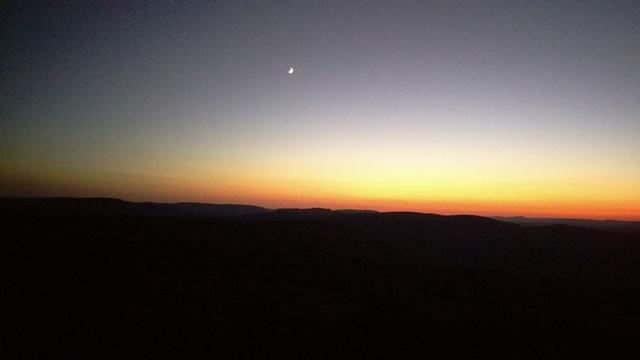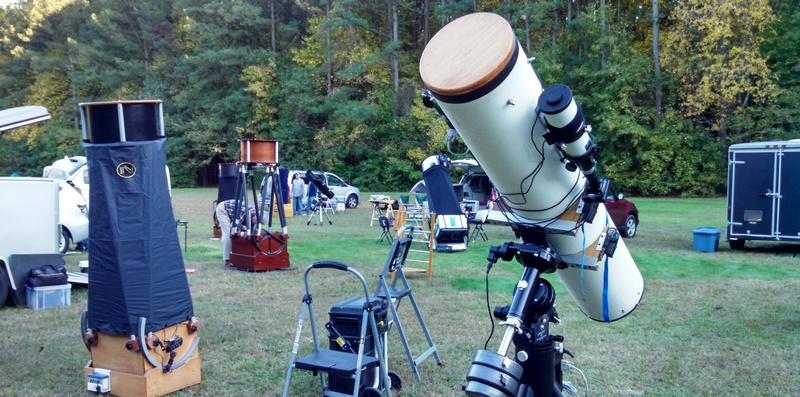Observing at Dark Sites


There’s nothing wrong with any size telescope that a good dark sky doesn’t fix. That’s been my mantra ever since my first visit to Cherry Springs State Park with my 8” SCT. A week prior to that a seasoned friend took me for my first dark site visit into Berks County, PA and I got hooked on the dark. I discovered that there are many more celestial objects available than can be seen from my home. Consider that taking my 8” scope out of my neighborhood, which typically has 4.5 Naked Eye Limiting Magnitude (NELM), to a reasonably dark site of 6.0 NELM effectively triples the number of Messier objects that are easily seen, not to mention how bright and detailed the brighter ones become. The tripling of easier to see objects expands to even greater numbers of Deep Sky Objects as aperture increases.
The Tuckahoe Equestrian Center “Stargaze” site was forsaken by the Delmarva Stargazers due to prohibitive costs and an expanding Baltimore light dome in lieu of the more affordable accommodations of Trap Pond State Park, although, I think, the Tuckahoe Ballfield is still available during the Summer if you’re a member of the Delmarva Stargazers and permission is obtained from the park ranger office. It’s flat, has a nice dark sky and there’s no need to dance around the ubiquitous equine droppings as at the Equestrian Center.
Trap Pond is a 2 hour drive for me and not as dark as the Blue Mountain Vista Observatory Field near New Ringgold, PA which is actually a little closer since I live in SE PA.
Several members are known to pursue their New Moon/dark window/deep sky observing fixes by frequenting nearer properties in Chester County, PA and Fair Hill, MD. Both of these sites are less than a half hour drive from Mount Cuba and require permission to access (details can be obtained from any DAS Board member at the monthly DAS meeting). They both yield 5.5 to 5.6 NELM skies, not super dark but quite serviceable.
The still reliable DAS Sawin Observatory, on the grounds of Mt. Cuba’s Astronomical Observatory, although not as dark as any of the aforementioned, affords large aperture equipment on site, privacy, much camaraderie AND it’s almost always available. No need to lug your equipment to the Sawin because DAS members trained to do so have use of the club’s equipment, a fair compromise for the 5.0 NELM sky there.
Almost any good night at the Blue Mountain Vista Observatory Field or the Tuckahoe Ballfield will have a 6.0-6.1 or better NELM sky with a nice Milky Way. But getting darker than that can add hours to a drive for New Castle County or SE PA denizens.
Lately, my proclivities are leaning towards seeking overnight accommodations notwithstanding longer drives and longer observing sessions. It gets me to darker places for a brighter look at my favorite celestial objects and, as a bonus, I often uncover some new gems.
Fred De Lucia

